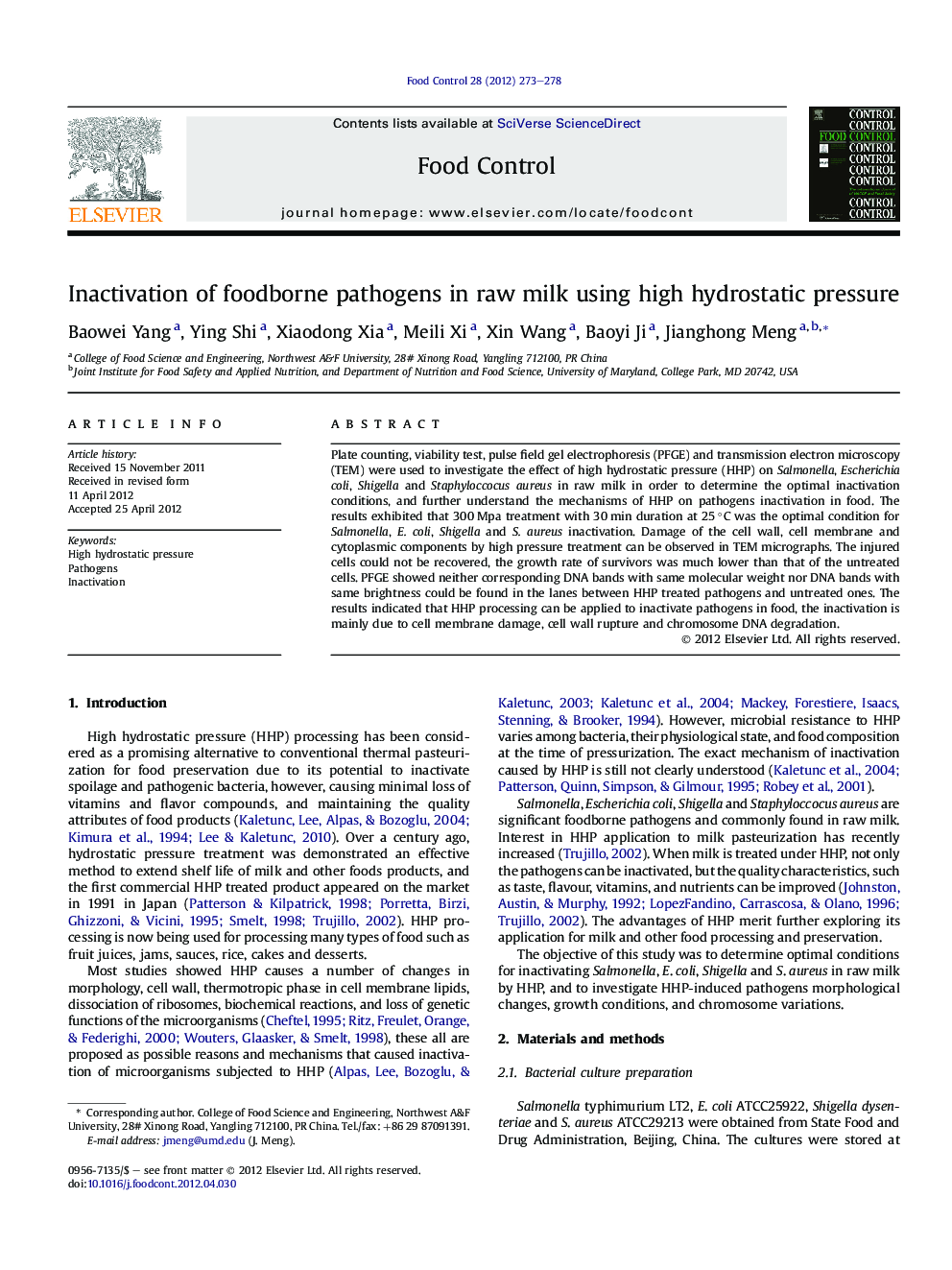| Article ID | Journal | Published Year | Pages | File Type |
|---|---|---|---|---|
| 6394315 | Food Control | 2012 | 6 Pages |
Plate counting, viability test, pulse field gel electrophoresis (PFGE) and transmission electron microscopy (TEM) were used to investigate the effect of high hydrostatic pressure (HHP) on Salmonella, Escherichia coli, Shigella and Staphyloccocus aureus in raw milk in order to determine the optimal inactivation conditions, and further understand the mechanisms of HHP on pathogens inactivation in food. The results exhibited that 300 Mpa treatment with 30 min duration at 25 °C was the optimal condition for Salmonella, E. coli, Shigella and S. aureus inactivation. Damage of the cell wall, cell membrane and cytoplasmic components by high pressure treatment can be observed in TEM micrographs. The injured cells could not be recovered, the growth rate of survivors was much lower than that of the untreated cells. PFGE showed neither corresponding DNA bands with same molecular weight nor DNA bands with same brightness could be found in the lanes between HHP treated pathogens and untreated ones. The results indicated that HHP processing can be applied to inactivate pathogens in food, the inactivation is mainly due to cell membrane damage, cell wall rupture and chromosome DNA degradation.
⺠Optimization of conditions for pathogens inactivation by HHP. ⺠Mechanism of Inactivation by HHP involved membrane damage and DNA degradation. ⺠HHP has great potential for application in food processing.
